Chores Around Town
Being present in the community has taken many shapes for me over the course of my multiple field visits. In Gjoa Haven such presence has often taken shape around activities that are part of Inuit day to day life. In the first week, when BearWatch researchers were present in Gjoa Haven in larger numbers, we for example helped George Konana take out his nets.
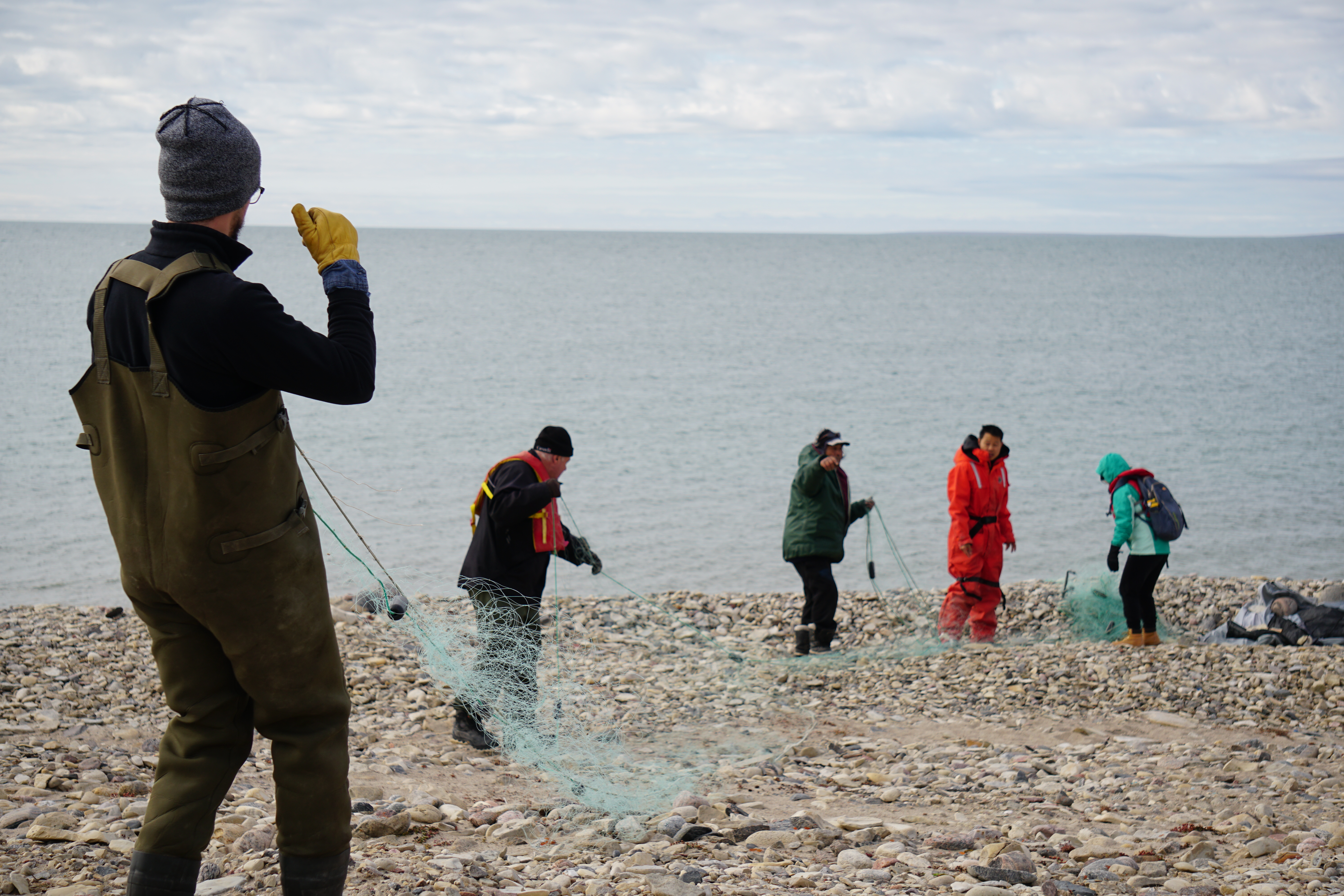
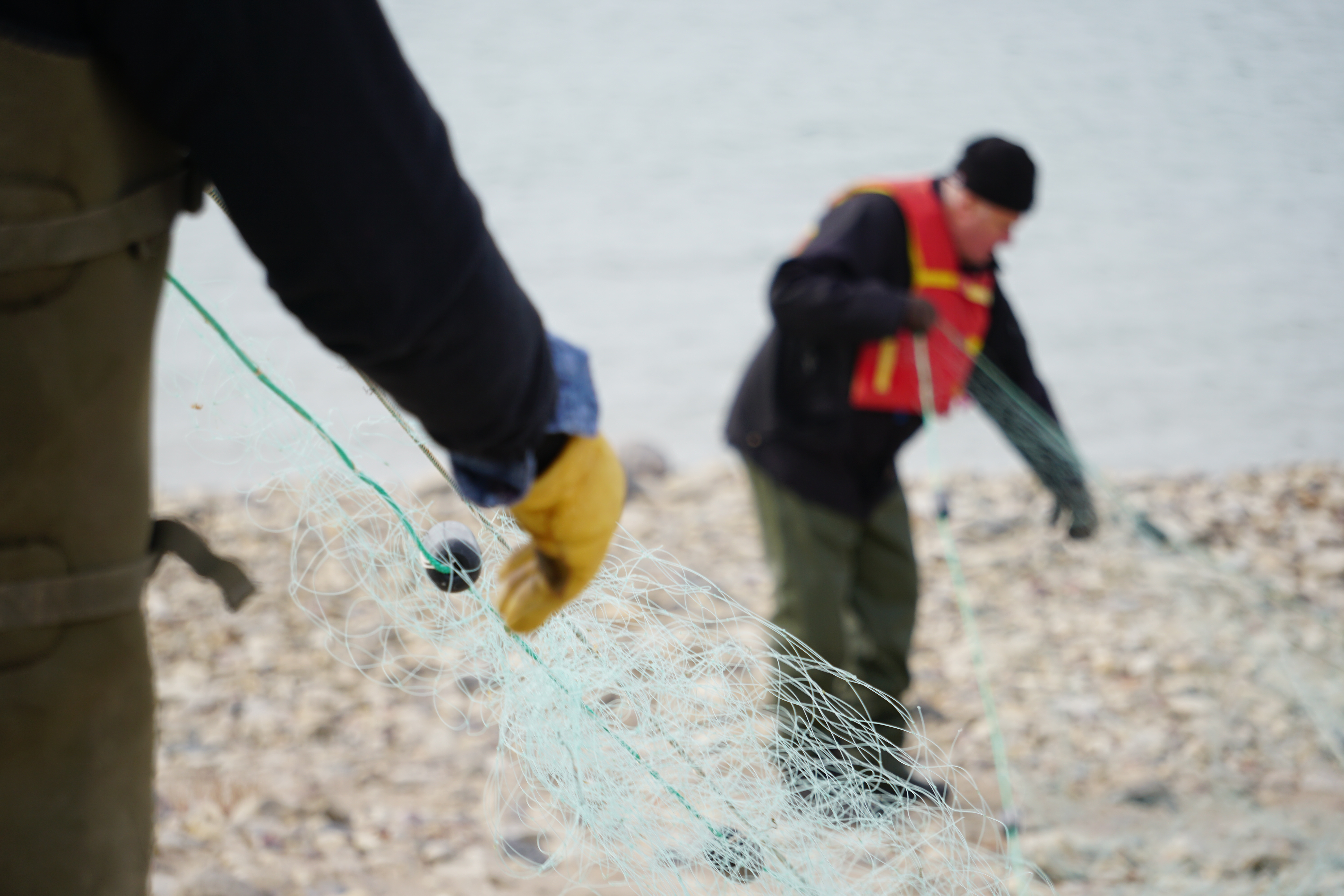
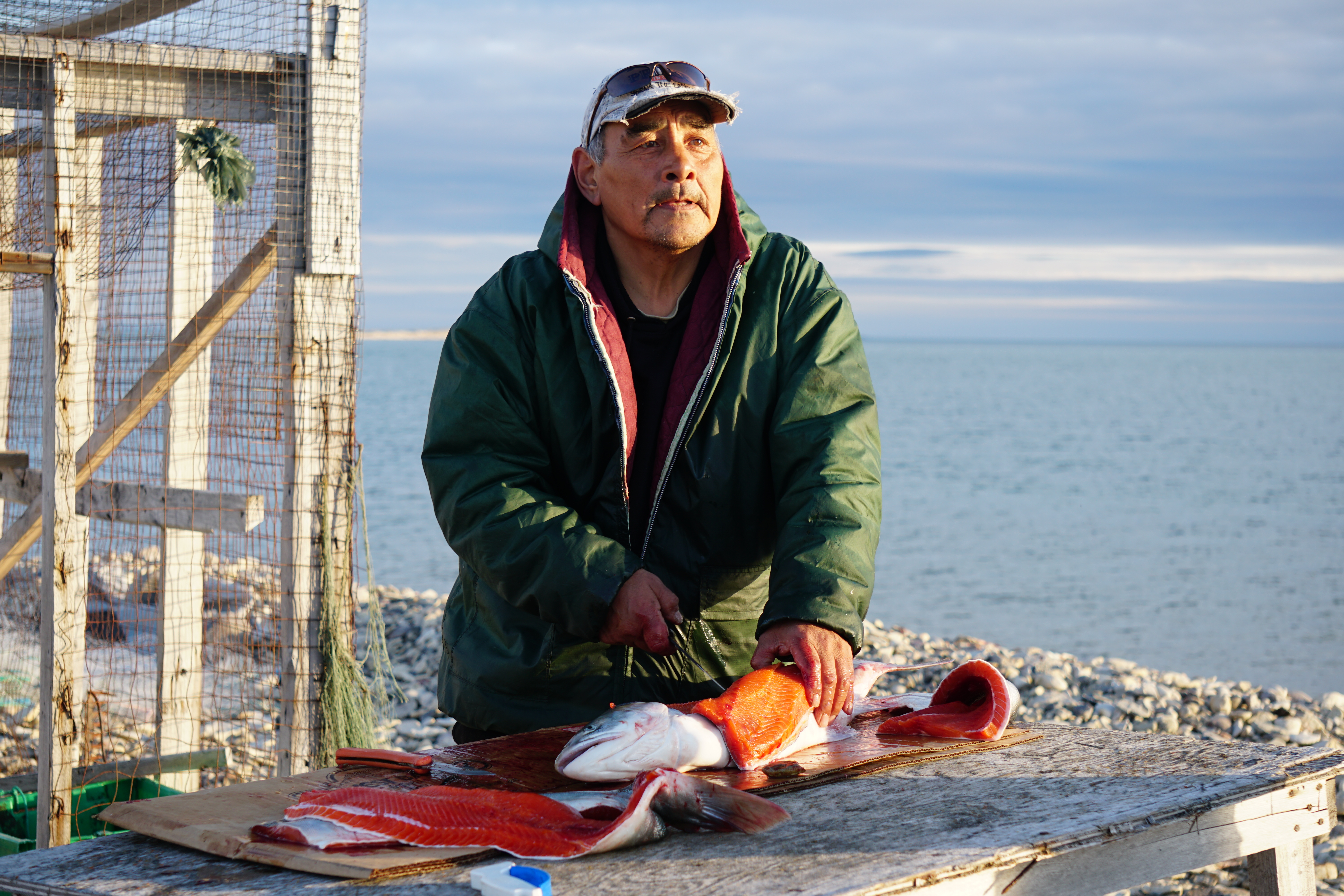
Stranding the Car
Most possibilities to get involved with chores around town and meeting people involved the intra-dynamics between an old truck, the elements and project-related logistics that had me drive across town for multiple purposes. My first introduction to how the material agencies of such intra-active elements created both possibilities and limitations in terms of community interaction patterns, was when the truck got stranded on the beach and flooded by the rising tide of the ocean. The collective efforts required to pull the truck out of the ocean is what co-Pi de Groot terms his “vulnerability narrative”: a performative display of the intra-dependent relationship he understands his relationship with the community at large to be comprised of.

Preparing and Packing for an ATV Ride
The environmental conditions in Inuit Nunangat seem initially a fitting context to easily debunk anthropocentric ontologies. For example, any visiting researcher who has tried to prepare, pack or pull a qamutiq (sled) across the land outside of Arctic Summer for the first time, like I did in 2021, has likely encountered the limits of human agency as well as the particular teachings of humility. Fumbling around with thick mitts, pens and paper, while knots need to be tied, and qamutiks need to be repaired, for example quickly eliminates the feasibility of (ethnographic) documenting on-the-spot. What remains, however, is attentive presence.
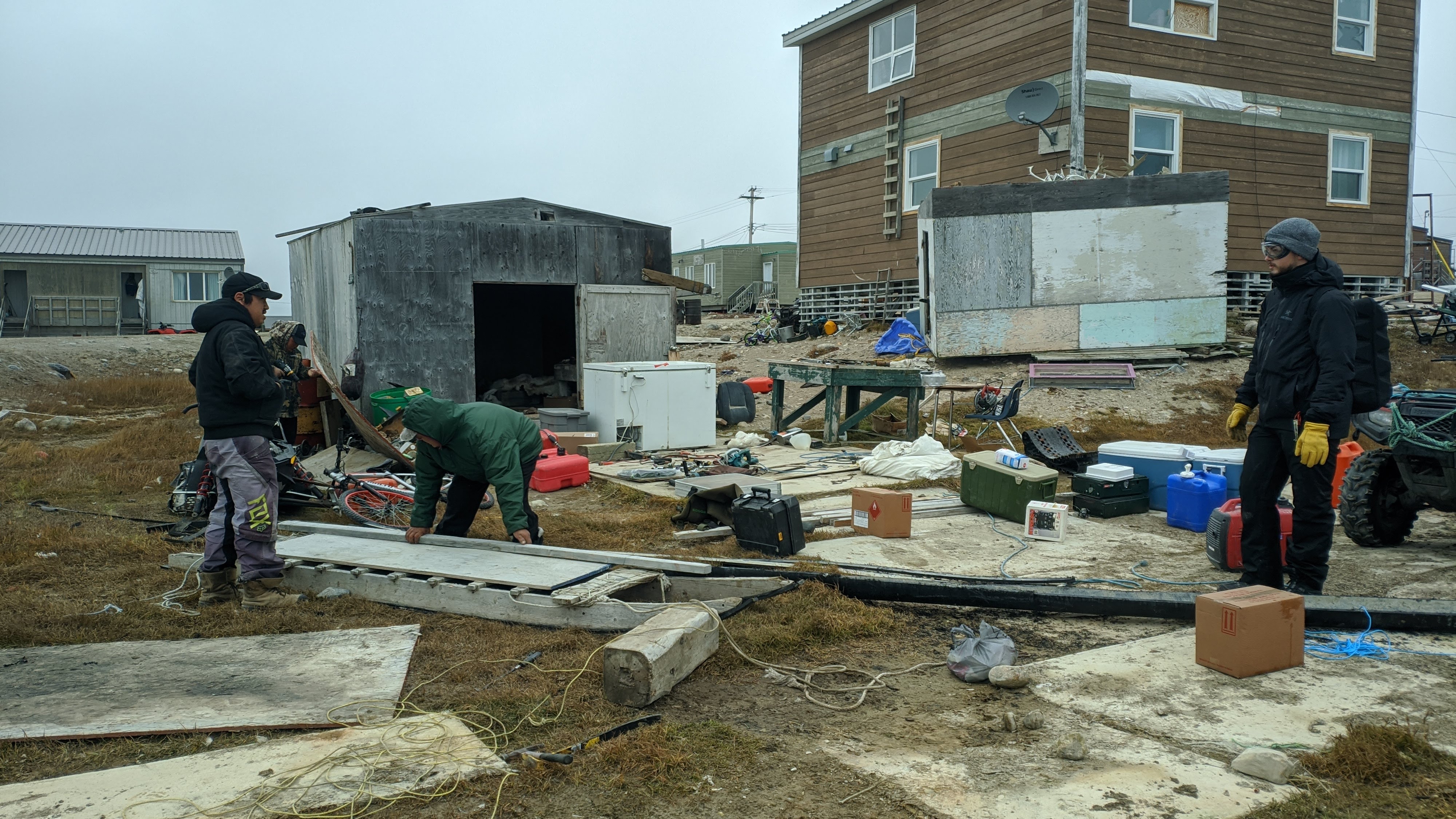

Camping at the Weir
After 4 hours of travelling by ATV, some of it in the dark, we arrive at the fishing Weir. After setting up the tents we watch George and his family spearfishing for a while.
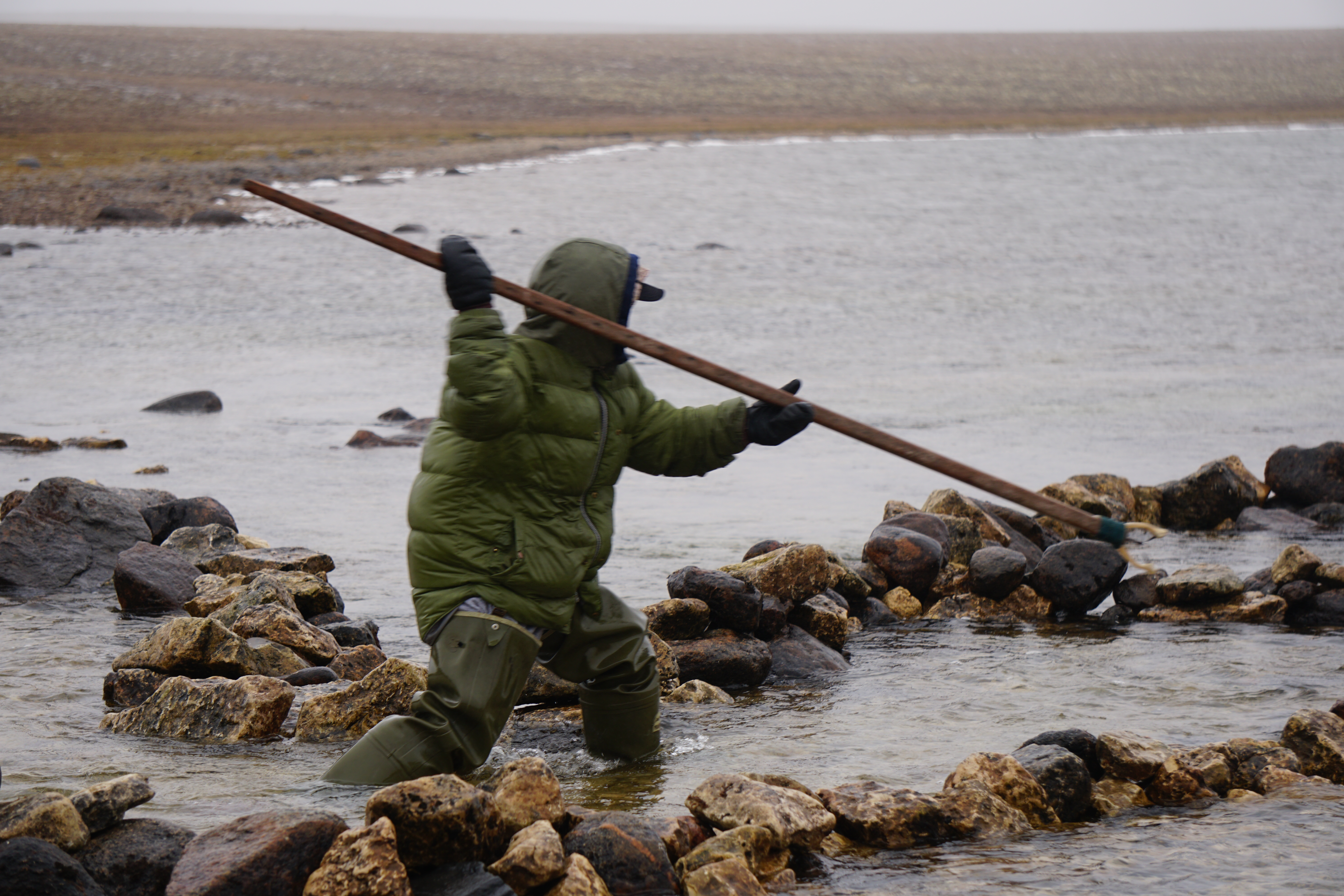
The land itself invites one to move away from anthropocentric tellings - towards narrations of becoming knowledgeable in company with the seasons, snow, ice, wind, rocks, and caribou. Such stories leave room for us as researchers, but are importantly not about us. Donna Haraway calls such stories “netbag stories” (2016, p.38). She argues, inspired by Ursula le Guin (1986), that the kind of stories we need telling in these times are not those of the Antropos. Not those of the capitalized Human in History and all the weaponized tools such a Human might carry, but those of the netbag, the basket, or any other concave shape. Such a netbag, or even a pair of cupped hands enables carrying things along, and receiving and giving away. Such exchange suggests ongoing stories of becoming with-; a collective making and unmaking of the world with ‘companion species’ as ‘kin’ (Haraway, 2003 ; 2016). These stories acknowledge messy, earthbound, multispecies entanglements, rather than man-making tales of the single hero.
